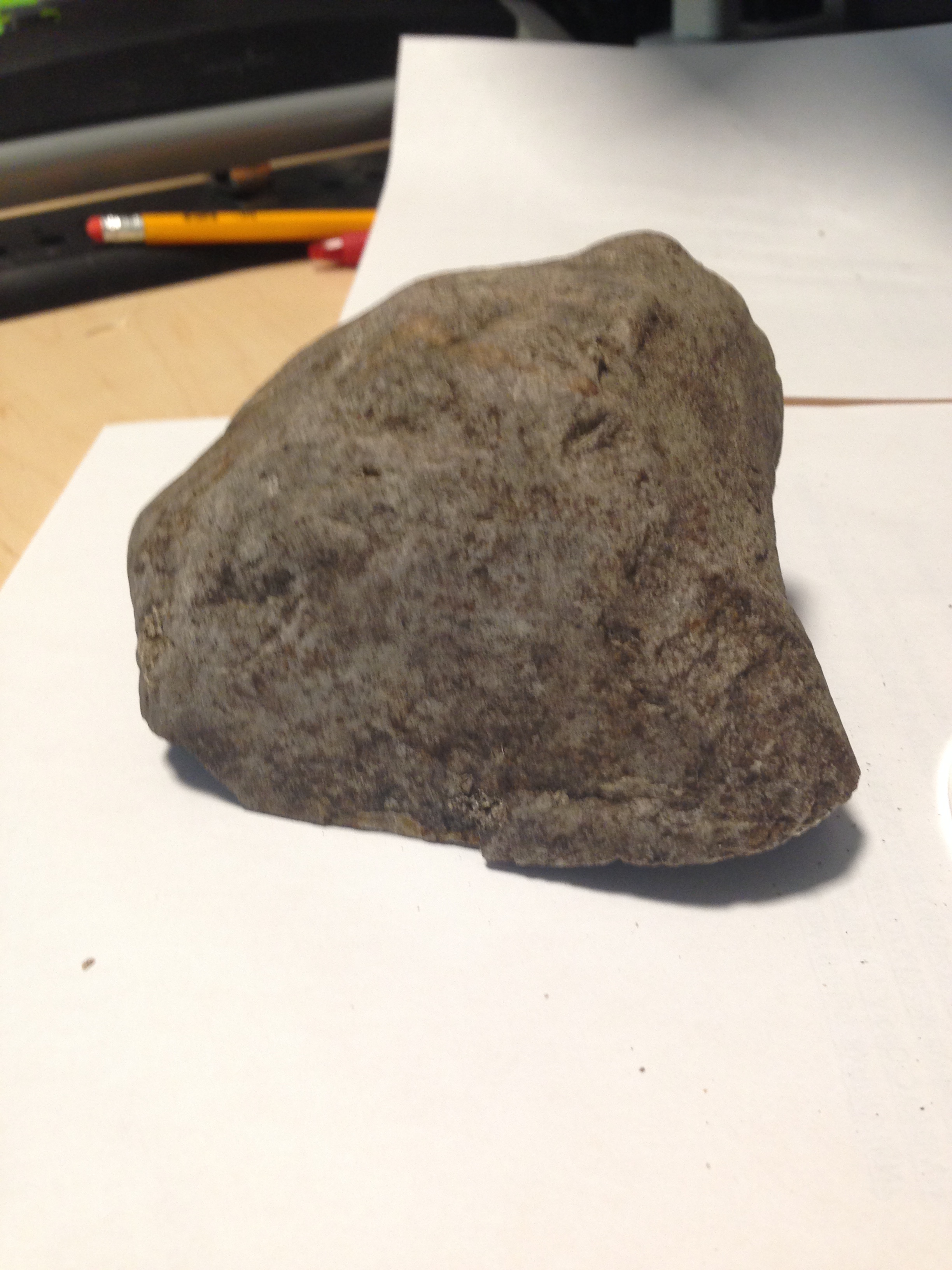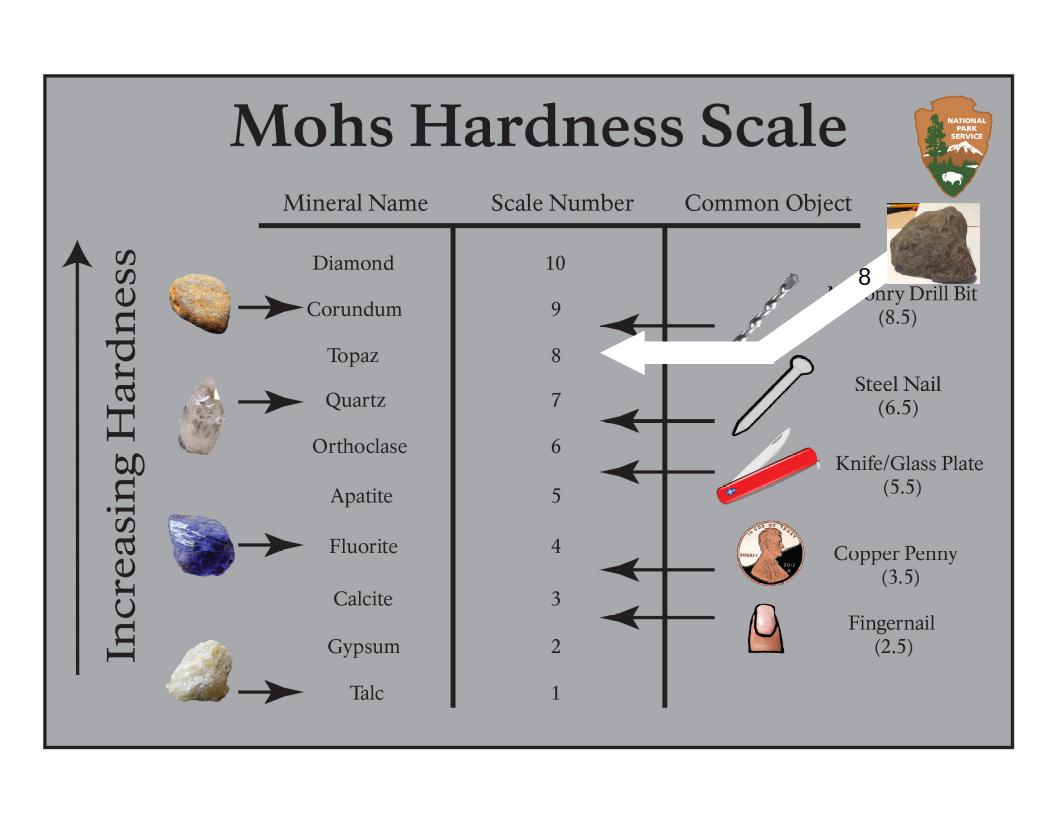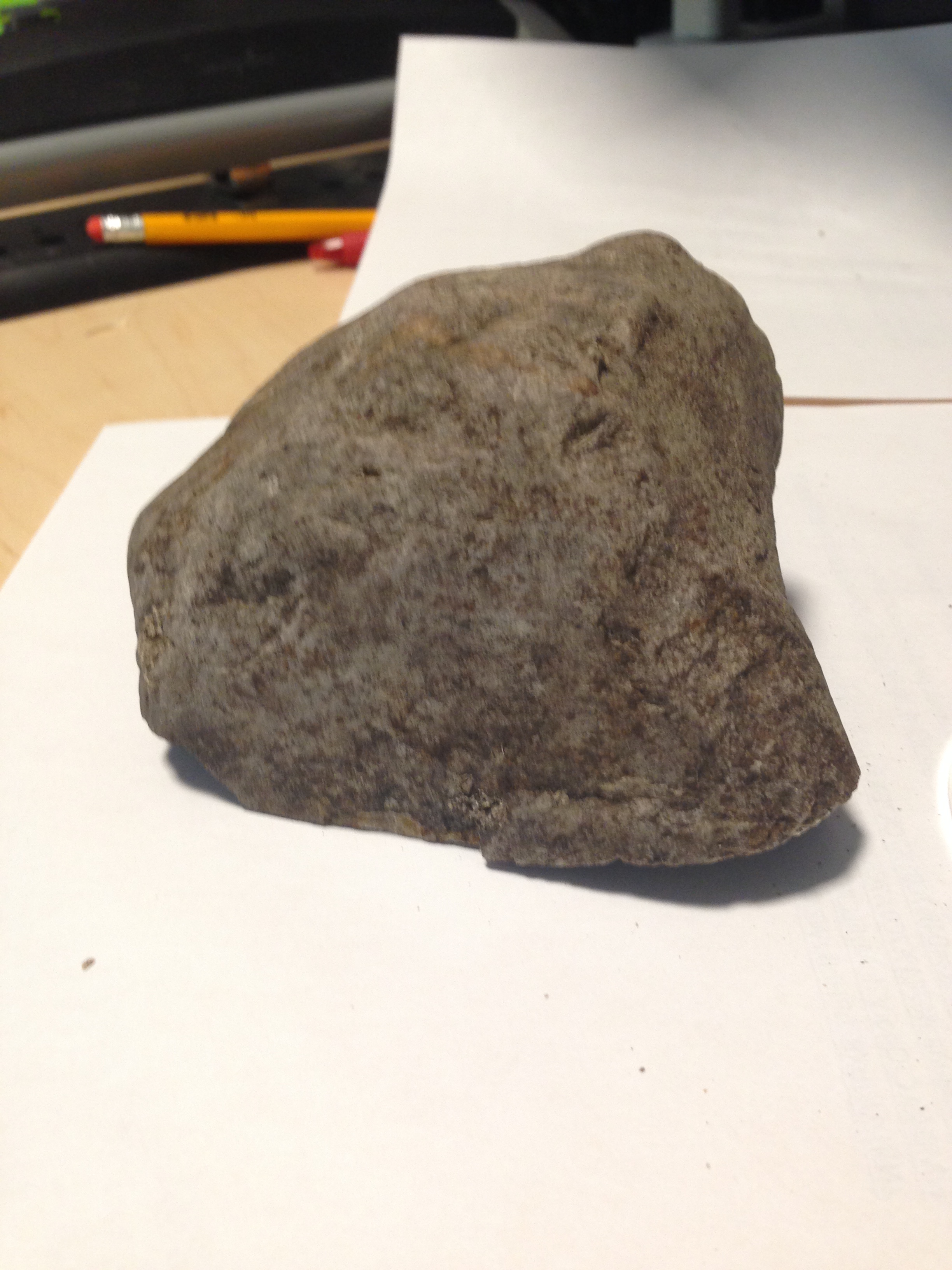
My rock is basalt. I found it in my yard. I don’t remember when we got it, but it has been next to our porch for a while. It isn’t to be confused with the vesicular basalt, like what my teacher found. This is vesicular basalt:

When lava has lots of iron and magnesium in it, and it melts down to form an igneous rock, it might become basalt. When there are lots of air bubbles, it becomes known as vesicular basalt. The name of basalt come from a Latin word meaning “very hard stone”. Basalt is an 8 on the Moh’s hardness scale. Basalt comes in a number of different colors depending on how it is exposed to weather. Just after forming it is usually dark black or dark grey, but the surface can become yellow or brown after lots of exposure. The crystals that make up basalt are microscopic, so tiny you can’t see them. According to Wikipedia, over 90% of volcanic rock is basalt!

You can also find basalt on other planets, such as Venus and Mars. There is also lots of Basalt on the moon. If you have ever looked at the moon at through a telescope, you will see dark patches, and those patches are basalt!

If lava flows into the sea, it creates what is called pillow rock, or, in this case, pillow basalt.

In conclusion, I think basalt is a really cool, interesting rock. I never knew that all the black patches on the moon were really basalt! Basalt forms near lava, and is usually black or dark grey. It is common on other planets.
Thanks for reading!
